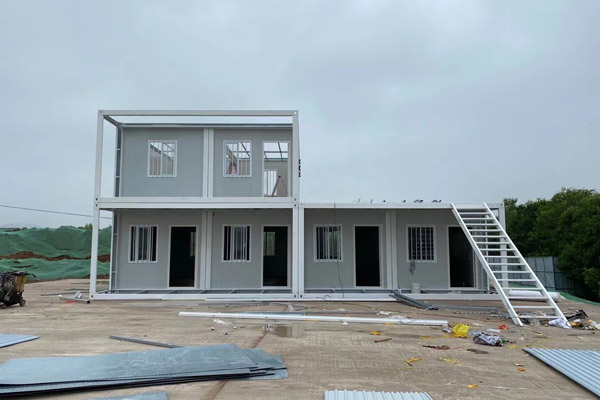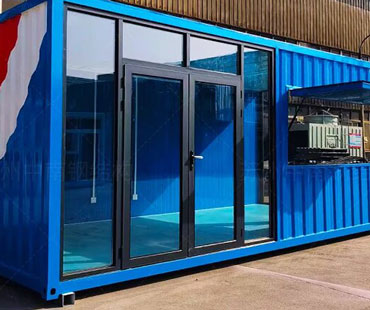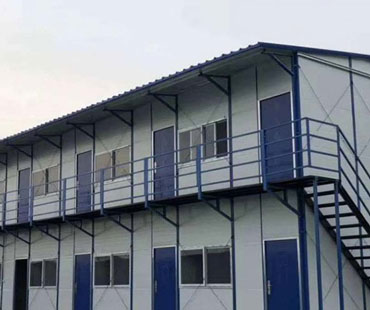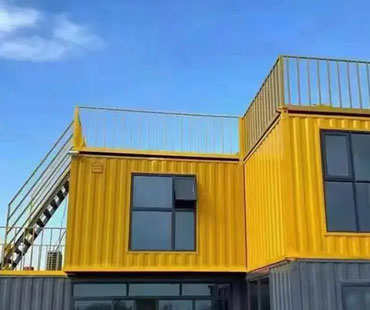Container housing in China has emerged as a transformative solution to the challenges of urbanization, providing affordable and adaptable living spaces in a rapidly changing environment. Initially utilized as temporary shelters, these innovative dwellings are increasingly being recognized as viable options for permanent residences.
Container housing refers to the use of repurposed shipping containers as living spaces. These structures are made from high-strength steel, making them durable and weather-resistant. They are designed to be modular, allowing for easy stacking and configuration to suit various needs. In China, container housing has gained popularity due to its cost-effectiveness, speed of construction, and environmental sustainability.
1. Initial Applications: Temporary Housing Solutions
Container housing in China initially gained traction in response to urgent housing needs. After natural disasters, such as the Sichuan earthquake in 2008, container homes were deployed as temporary shelters for displaced residents. Their quick assembly and mobility made them an ideal solution for providing immediate relief.
-Emergency Relief: Container homes provided a rapid response to housing crises, allowing governments and NGOs to set up temporary living arrangements in affected areas. These homes offered basic amenities and a sense of security for those who had lost their homes.
-Construction Sites and Urban Development: In urban areas, container housing has been widely used as temporary accommodations for migrant workers and construction crews. The ease of installation and relocation made it a practical choice for companies needing to provide housing for their workforce.
2. Transition to Permanent Residences
As the benefits of container housing became more apparent, the perception shifted from viewing them merely as temporary solutions to recognizing their potential as permanent residences. Several factors have contributed to this transition.
-Affordability: With rising property prices in urban centers, container housing offers an affordable alternative for individuals and families. The cost of constructing a container home is significantly lower than traditional housing, making it accessible to a broader population.
-Sustainability: Container homes are often viewed as eco-friendly options, as they repurpose existing materials that would otherwise contribute to waste. Additionally, many container housing projects incorporate sustainable features, such as solar panels and rainwater harvesting systems, further enhancing their appeal as permanent residences.
-Urban Planning Initiatives: Local governments in China have recognized the potential of container housing to address housing shortages and promote sustainable urban development. Many cities have initiated projects to incorporate container homes into their urban planning strategies, leading to the establishment of container housing communities.

3. Innovative Designs and Customization
The design flexibility of container housing has played a crucial role in its acceptance as a permanent living solution. Architects and designers have embraced container homes, creating innovative and aesthetically pleasing designs tailored to meet the needs of residents.
-Modular Configurations: Container homes can be easily combined to create larger living spaces, allowing for customization according to family size and lifestyle. This modular approach enables residents to expand their homes as their needs evolve.
-Interior Design and Comfort: Modern container homes are equipped with essential amenities such as kitchens, bathrooms, and living areas, providing comfort comparable to traditional homes. Interior design innovations have transformed the interiors of container houses, making them inviting and functional.
4. Challenges and Considerations
Despite the growing popularity of container housing in China, several challenges must be addressed to ensure its long-term viability as a permanent residence option.
-Regulatory Hurdles: Building codes and zoning regulations can pose obstacles to the widespread adoption of container housing. Local authorities may have varying standards for construction and safety, which can complicate the approval process for container home projects.
-Cultural Perceptions: In some regions, there may be a stigma associated with living in container homes, as they are still often viewed as temporary solutions. Efforts to change public perception and highlight the benefits of container housing are essential to overcoming these biases.
-Infrastructure and Utilities: The integration of container housing into existing urban infrastructure is crucial for its success as a permanent residence. Ensuring access to utilities such as water, electricity, and sewage systems is necessary for creating sustainable container communities.
5. Future Prospects
The future of container housing in China looks promising, with continued innovation and investment in this sector. As cities grapple with housing shortages and sustainability challenges, container homes offer a practical solution that aligns with modern urban living needs. The trend towards permanent container housing is expected to grow, driven by advancements in design, technology, and urban policy.
Container housing in China has evolved from a temporary solution for emergencies to a viable option for permanent residences. Its affordability, sustainability, and adaptability make it an attractive alternative in the face of rapid urbanization and rising housing costs.


